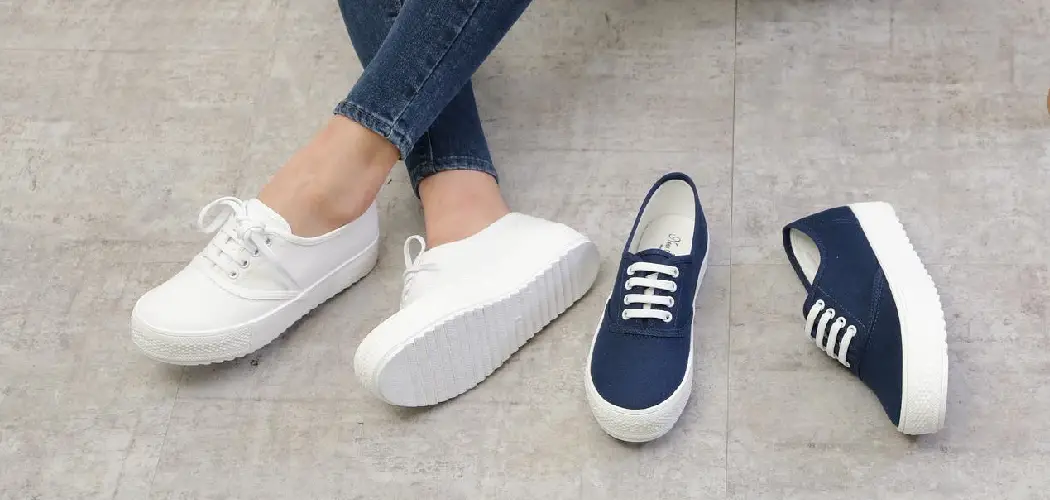There are a few key things you can look for to determine if a shoe is nonslip. This blog post will cover those things and provide some tips on making your shoes nonslip. So whether you’re looking for a new pair of nonslip shoes or want to make your current ones safer, keep reading to learn more about how to tell if a shoe is non slip?
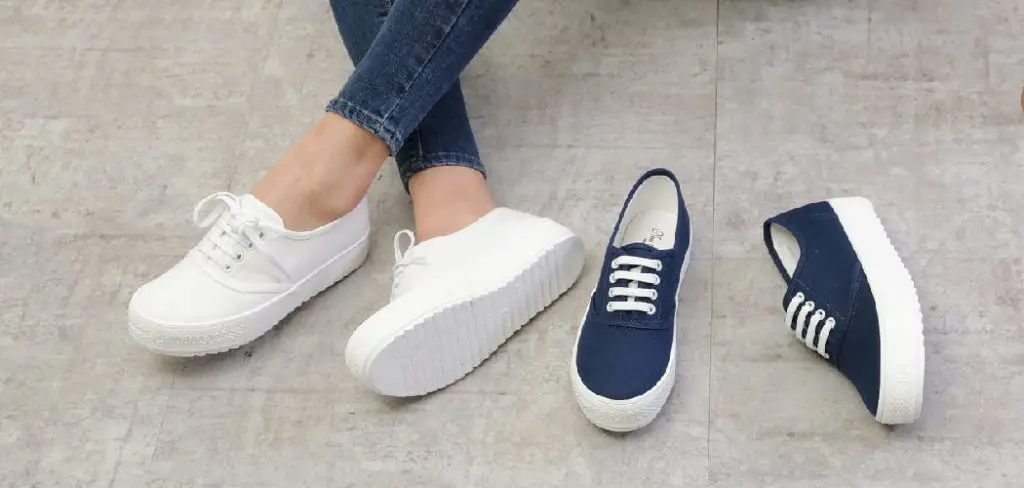
Summary: Non-slip shoes are an important safety measure for anyone who is in a potentially slippery environment. To test if a shoe is non-slip, check the sole of the shoe for special textured patterns and/or treads. These designs provide extra grip on surfaces such as wet or oily floors and icy surfaces. Another way to tell if a shoe is non-slip is to test it on a wet surface, such as a bathroom floor. If the shoe grips the floor, then it is likely classified as non-slip.
What Is a Nonslippy Shoe?
A nonslippy shoe is a type of footwear designed to provide traction and stability on slippery surfaces. They are often made from materials resistant to slippings, such as rubber or synthetic compounds. Nonslippy shoes are used in various settings where there is a risk of slippings, such as kitchens, bathrooms, and outdoor areas.
They are also commonly worn by people who work in occupations requiring them to stand for long periods, such as nurses, servers, and construction workers. In addition to their slip-resistant properties, nonslippy shoes are often designed to be comfortable and supportive. This helps reduce the risk of injuries that can occur from slips and falls.
Why It’s Important to Know if A Shoe Is Non-Slip?
In today’s world, many hazards can risk our safety. Whether we’re walking on wet sidewalks or working in a kitchen, it’s important to be aware of our surroundings and take precautions to prevent injuries. One way to do this is to wear shoes with good traction.
Nonslip shoes can help protect us from slips and falls, and they’re an essential piece of equipment for anyone who works in a hazardous environment. But, even if you’re running errands or taking a walk, it’s important to be aware of the risks involved in wearing ill-fitting or poor-quality shoes.
So next time you’re shopping for shoes, make sure to ask about the non slip features. It could be the difference between a safe walk and a trip to the hospital.
20 Tips to Follow on How To Tell If A Shoe Is Non Slip
1. What Does the Manufacturer Say
The best way to find out if a shoe is nonslip is to check the manufacturer’s website or product label. If they don’t explicitly say that the shoe is nonslip, it probably isn’t.
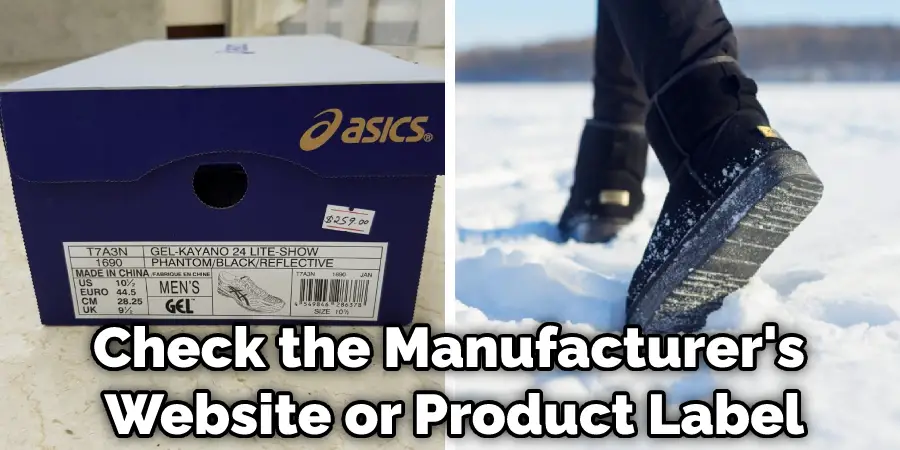
2. Look for an SRC Label
If you see an “SRC” label on a shoe, it has been tested for slip resistance and meets certain safety standards. SRC-labeled shoes are ideal for workplaces that require non-slip footwear.
3. Check the Outsole
The outsole of a non-slip shoe is usually made from a material that offers good traction, like rubber. You can usually tell if a shoe has a good outsole by looking at the tread pattern. If the outsole is smooth or lacks any tread pattern.
4. Check the Material
The material of the shoe is also important when it comes to how slip-resistant it will be. Leather and synthetic materials are generally more slip-resistant than cloth. If you are looking for a non-slip shoe, make sure to check the material before purchasing.
5. Look for Special Features
Many shoes that are marketed as being non-slip will have special features that help to improve traction. These can include textured soles, deep treads, and even spikes or other protrusions. If you see any of these features, it’s a good indication that the shoe is non-slip.
6. Scrutinize the Tread Patterns
One of the best ways to tell if a shoe is a non slip is to look at the tread patterns. If you see big, chunky treads that are widely spaced apart, the shoe is likely to have a good grip. On the other hand, if the treads are small and close together, the shoe might not provide as much traction.
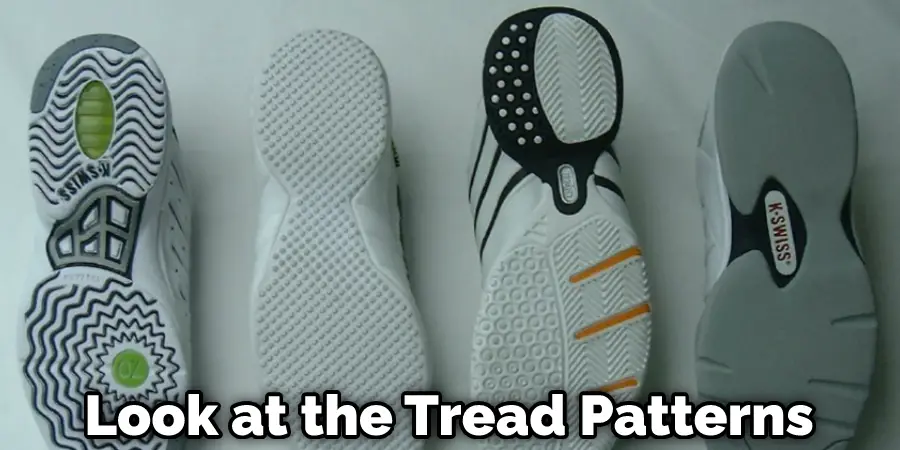
7. Rounded Soles Are Better than Flat Soles
Flat soles are the main reason why shoes slip in the first place. They don’t provide any traction and can be quite slippery on certain surfaces. On the other hand, rounded or textured soles will provide better grip and traction, making it less likely for your shoes to slip.
8. Look for Rubber Soles
One of the simplest ways to tell if a shoe is non-slip is to look at the sole. If the bottom of the shoe is made of rubber, the shoe will likely have good traction. This is because rubber has a naturally grippy texture that helps it grip surfaces well. If you’re unsure what material the sole is made of, you can always ask a sales associate or look it up online.
9. Check for a Certification Label
If you want to ensure that a shoe is non-slip, look for a certification label. Shoes that have been certified by an organization like the American Society for Testing and Materials (ASTM) have been put through rigorous tests to make sure they meet certain safety standards. These shoes are usually clearly labeled, so you can easily tell if a shoe is certified non-slip.
10. Try Them On
There’s only one foolproof way to know if a shoe is truly non-slip: try them on. Different shoes will fit differently and feel differently on your feet. What works for one person might not work for another, so it’s important to find a shoe that fits well and feels comfortable for you.
Once you’ve found a shoe that seems like it would work, take them for a test walk on various surfaces to see how they perform. If the shoe slips or doesn’t feel comfortable, keep looking until you find the perfect pair for you.
11. Look for Soles with Grooves
Most non-slip shoes have soles that are textured with deep grooves. These grooves help provide traction on slippery surfaces by giving your shoe a better grip. You can usually feel these grooves when you run your hand over the bottom of the shoe.
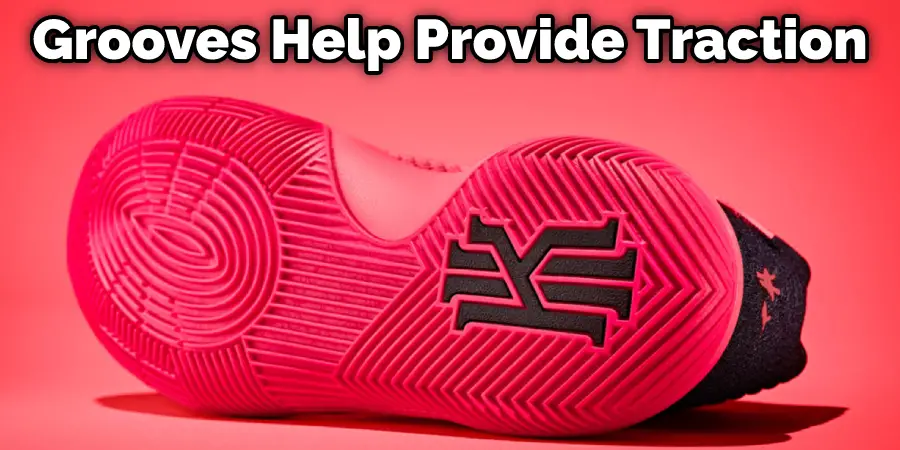
12. Check for a Heel Counter
One of the most important features of a non-slip shoe is a heel counter. This is a stiff piece of the material located at the back of the shoe, near the heel. It provides support and stability to the heel and ankle, which helps to prevent slips and falls. If you can’t see a heel counter, or if it looks flimsy, the shoe is likely not non-slip.
13. Find out The Materials for Making the Shoes
There are many materials for making shoes, but rubber is the most common and important material. It is used in the soles of shoes to provide them with a good grip. You can usually find out if a shoe is made of rubber by looking at the bottom of the shoe. If it is made of rubber, it will be black and have a textured surface.
Other materials used in shoes include leather, fabric, and synthetic materials. These materials are often used in the shoe’s upper part of the lining. They are not as important for the grip of the shoe, but they can add to the comfort or style of the shoe.
14. Special Design Features
Some shoes have special design features that make them more slip-resistant. These can include textured outsoles, deeper treads, and reinforced toes. Look for these features when shopping for shoes to wear in slippery conditions.
15. Check the Rating
When looking at shoe options online, check the slip-resistance rating. This will give you an idea of how well the shoes will perform in slippery conditions.
16. Ask for Recommendations
If you’re still not sure which shoes to choose, ask for recommendations from a salesperson or someone who works in a hazardous occupation. They will be able to tell you which shoes they trust to keep them safe on the job.
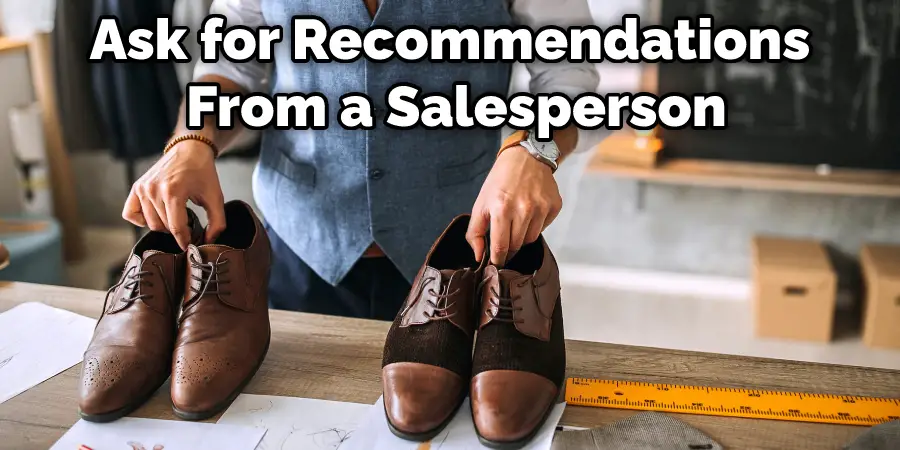
17. Try Them On
Try the shoes on and walk around in them for a bit when in doubt. This will give you a good idea of how they feel and how well they grip the floor.
18. Read the Reviews
When you’re shopping online, take a look at the customer reviews. People who have purchased and worn the shoes will be able to give you an idea of how well they work.
19. Do Some Research
If you’re still not sure which shoes to choose, do some research online. There are many resources available that can help you find the best shoes for your needs.
20. Consider Your Needs
When choosing non-slip shoes, it’s important to consider your needs. Think about the type of work you do, the conditions you’ll be working in, and how much protection you need. This will help you narrow down your options and choose the best shoes for you.
Now that you know how to tell if a shoe is non slip, you can start shopping for the perfect pair. Remember to consider your needs and the conditions you’ll be working in. Take a look at the ratings and customer reviews to understand how well the shoes work.
And don’t forget to try them on before you buy them. With these tips, you’ll be sure to find the perfect pair of shoes to keep you safe on your feet.
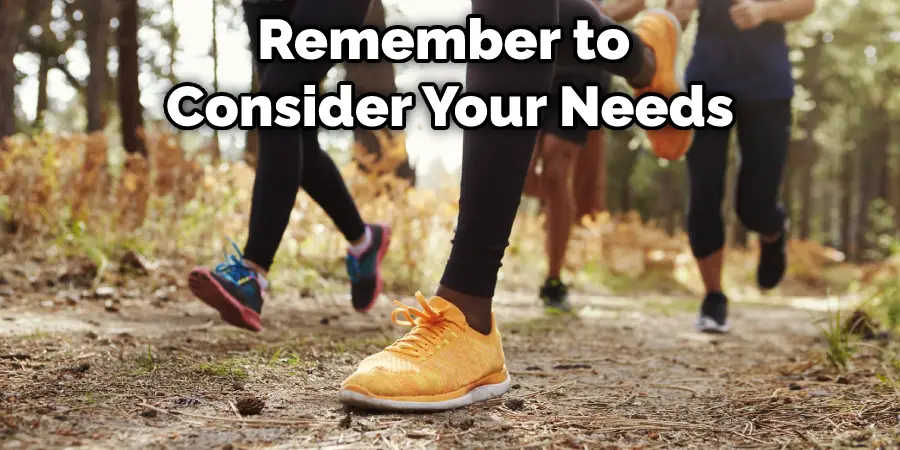
What Makes a Shoe Non-Slip?
1. Shoe Material
One of the most important factors in non-slip shoes is the material they’re made from. Leather and synthetic materials tend to be slippery, while rubber and other textured materials provide more traction.
2. Shoe Design
The design of the shoe can also impact how well it grips the ground. Shoes with a flat sole or those designed for activities like hiking or walking tend to have more traction than shoes with a raised heel or those designed for running or other athletic activities.
3. Outsole Design
A big factor in how well a shoe grips the floor is the design of its outsole. A shoe with a herringbone or chevron tread pattern, for example, will offer more traction than one with a simple straight-line tread.
4. Siping
Siping is a process in which small slits are cut into the outsole of a shoe to improve traction. This can be especially helpful in shoes worn in wet or icy conditions.
5. Heel and Toe Taps
Heel and toe taps are another common feature on non-slip shoes. These are small, raised pieces of rubber or other material placed over the heel and toe areas of the outsole to improve traction and prevent slipping.
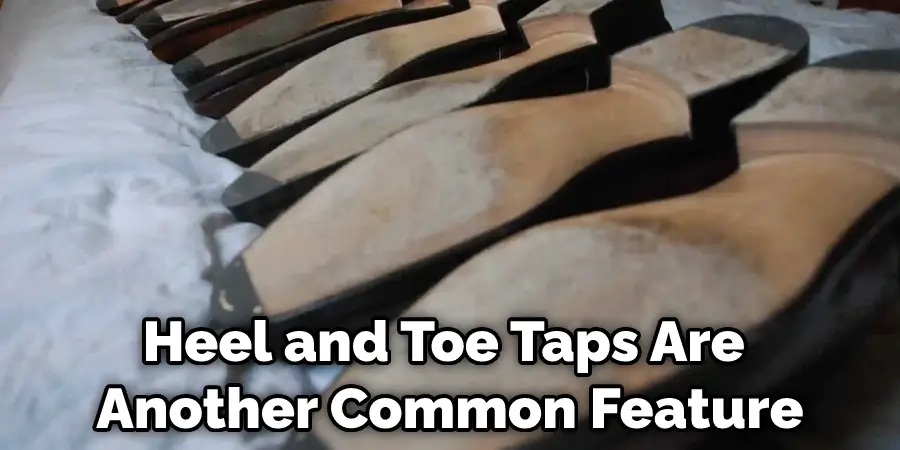
How To Make Shoes Non-Slip Step by Step Guide
Step 1: Use Sandpaper
If the shoes you want to make non-slip are made of smooth leather or synthetic materials, you can use sandpaper to roughen up the surface. This will create more friction and help to prevent slipping.
Step 2: Use a Nonslip Spray
Another way to make shoe slip-resistant is to use a nonslip spray. You can buy a commercial nonslip spray or make your own using fabric softener and water. Mix equal parts of water and fabric softener, and then spray the mixture onto the bottom of your shoes.
The fabric softener will help create a barrier between your shoes and the floor, reducing the chances of your shoes slipping.
Step 3: Add a Nonslip Pad
If you want an extra level of protection against slipping, try adding a nonslip pad to the bottom of your shoes. You can buy nonslip pads designed specifically for shoes, or you can use rubber mats or strips that you cut to fit. Then, affix the pad or strip to the bottom of your shoes with double-sided tape or glue, and you should be good to go.
Step 4: Add a Salt and Rubber Glue Mixture
Mix 1 part salt with two parts rubber glue in a small bowl. Next, apply the mixture to the bottom of your shoes using an old toothbrush. Once you have coated the bottom of your shoe, let them dry for at least 12 hours before wearing them.
Step 5: Stick Two Adhesive Bandages
Place one adhesive bandage over the wet shoe sole and heel area. Next, wrap the bandage around the back of the heel and attach it to the bottom front of the shoe. Finally, place a second adhesive bandage over the top, covering the first bandage completely. This will help keep your shoes from slipping while you walk or run.
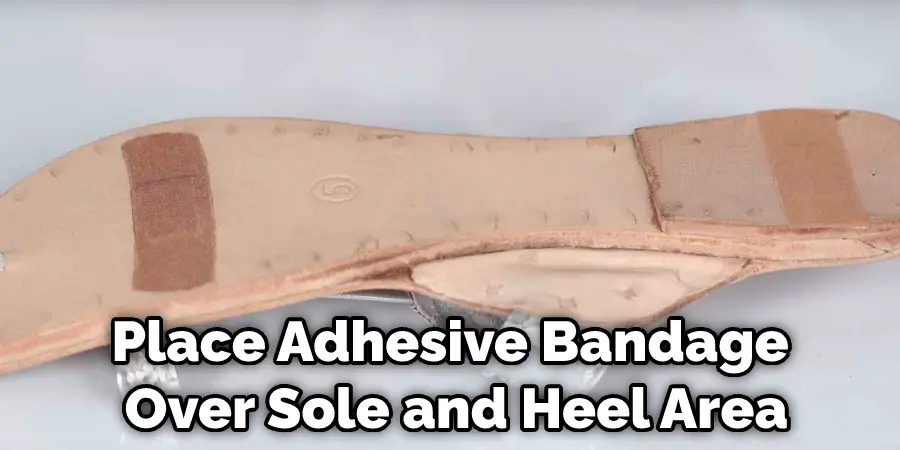
Step 6: Use a Hairspray
If you don’t have any rubber glue or salt on hand, you can also use hairspray to make your shoe slip-resistant. Spray the bottom of your shoes with hairspray and let them dry. The sticky residue will help to keep your shoes from slipping.
Step 7: Wear Your Shoes
Once you have followed one of the above methods, your shoes should be non-slip and ready to wear. Test them out on a clean, dry surface before wearing them in wet or slippery conditions. With proper care, your nonslip shoes should last for many years.
It’s better to be safe than sorry when it comes to preventing slips and falls. By taking the time to make your shoe slip-resistant, you can help to prevent accidents and injuries. If you want to know more about how to tell if a shoe is non slip keep reading.
Why Do You Need a Slip-Resistant Shoe?
Reduce Accidents:
Slips and falls are a leading cause of both accidental injury and death. According to the National Safety Council, slips and falls account for 15% of all accidental deaths and are second only to motor vehicle accidents as a cause of accidental injury.
Many factors can contribute to a slip or fall accident, but one of the most preventable is wearing the wrong shoes. Wearing shoes with good traction can help reduce the risk of slipping and falling and ultimately save lives.
Reduces Accidents At Work:
A good slip-resistant shoe will help reduce the number of accidents in the workplace. In addition, they will provide you with better traction on slippery surfaces, which can help prevent slips and falls.
Reduce Accidents At Home:
Wet floors in the bathroom and kitchen are a recipe for disaster. If you live with kids, slips and falls go up exponentially. Even if you’re careful, it’s easy to spill something or track in water from outside accidentally. Wearing shoes with good traction can help prevent accidents.
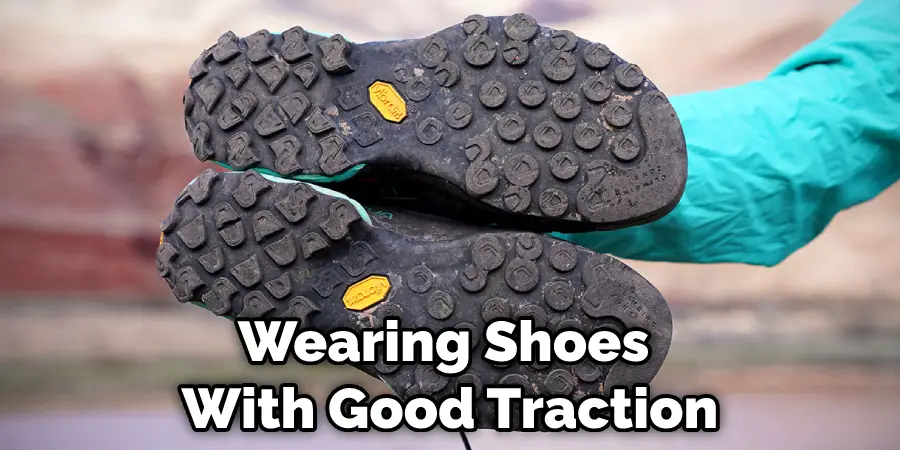
Reduce Accidents on the Road:
A study conducted by the National Institute for Occupational Safety and Health in 2007 revealed that workers in the foodservice, healthcare, and retail industries were more likely to suffer slip-and-fall injuries than workers in other industries.
Reduce Accidents in Kitchens:
The leading cause of slips and falls in the kitchen is wet floors. So whether you’re dealing with spills or tracking in water from outside, a good slip-resistant shoe can help you avoid these accidents. Look for shoes with textured soles that grip the floor and provide good traction.
When to Wear Non-slip Shoes
Non-slip shoes are an important part of safety gear for many occupations. Workers in the foodservice, healthcare, and manufacturing industries are just a few people who need to wear non-slip shoes. But when do you need to wear non-slip shoes?
Any time you are working in an environment where you risk slipping, you should consider wearing non-slip shoes. For example, if you are working with fluids or other substances that could cause you to slip or working in an environment where slippery surfaces are common, non-slip shoes can help keep you safe.
Even if your workplace does not have a specific policy on non-slip shoes, it is always good to err on the side of caution and wear shoes with good traction whenever possible. Keep reading for more information about how to tell if a shoe is non slip.
How to Make Shoes Slip Resistant for Restaurant?
Anyone who has worked in the restaurant business knows that slippery floors can be a big problem. Slippery floors are a hazard for both employees and customers, whether it’s spilled water or grease from the grill. Fortunately, there are a few things that you can do to make your shoe slip-resistant.
First, make sure that your shoes have good traction. Wear shoes with rubber soles or raised treads to help grip the floor. In addition, avoid wearing shoes with smooth leather soles; instead, choose shoes made of materials like suede or canvas.
Finally, be sure to clean your shoes regularly. A build-up of debris on the bottom of your shoes can make them more likely to slip. You can help keep yourself and your customers safe from slips and falls by following these tips.
How Do I Keep My Boots From Slipping On Ice?
Winter weather can be treacherous, especially when it comes to ice. One false step can send you tumbling, and even the most experienced hikers can slip on icy terrain. So how can you avoid taking a spill?
The first step is to choose the right footwear. Boots with deep treads and a good grip are essential for traction, and you may also want to consider using crampons or ice cleats.
If you’re still having trouble keeping your footing, try spreading sand or cat litter over the icy surface. This will help to provide additional traction and improve your balance. With a little bit of care, you can stay safe on your next winter hike.
Frequently Asked Question
How Do I Make Sure My Shoes Don’t Slip?

Making sure your shoes don’t slip is easy – apply some nonslip grip to the bottom of your shoes. This can be done with several products, like slip-resistant tape or spray. You can also use a nonslip insert to provide extra grip.
What is the Difference Between Anti-Slip and Slip Resistant?
The difference between anti-slip and slip-resistant is that anti-slip means the shoe will not slip at all, while slip-resistant means the shoe will only be less likely to slip.
How Do You Know if Your Shoes Are Non Slip?
There are a few ways to test if your shoes are nonslip. One is to try to walk on a wet surface in them. If you can walk without slipping, they are likely nonslip. Another way to test is to see how well they grip a surface. Try to move them back and forth on a hard surface; if they grip well, they are likely nonslip.
Finally, you can try to wear them when you need nonslip shoes, such as in the kitchen or bathroom. If they perform well in these situations, they are likely nonslip.
What Are the Different Types of Non-Slip Shoes?
There are a few different types of nonslip shoes available on the market. Some of the most common types are slip-resistant shoes, grip treads, and anti-slip stickers.
ou Can Check It Out To Style Colorful Shoes
Conclusion
If you are looking for shoes that will help keep you safe while working, it is important to know how to tell if a shoe is non slip. By following the tips in this post, you can find shoes to help you stay safe on the job.
You May Also Read: Best Slippers for Tile Floors

